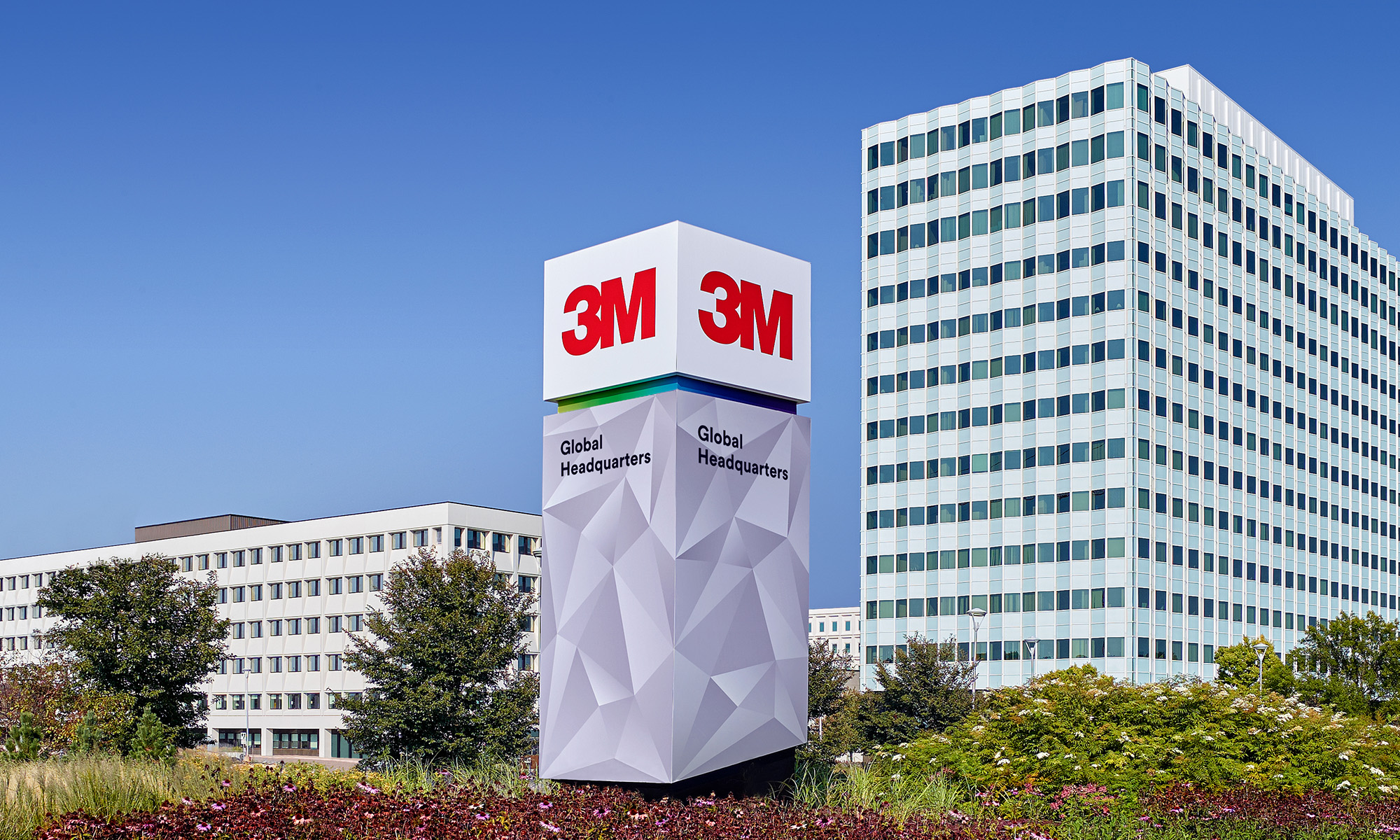
Source: Wikipedia
The multinational company 3M (MMM +0.12%) has been on a market-beating winning streak in recent years, and there are perfectly valid reasons to believe this trend can continue. I highlighted a few reasons in a recent article, and other Fools have made a convincing case for its long-term prospects as well.
Nonetheless, it's important to evaluate every angle – to flip a bull thesis on its head and fully understand the risks involved. With than in mind, I have some concerns about 3M's operations and the price of its shares.
Here's why I think this stock could be due for a pullback.
Manufacturers like 3M look pricey
My first argument deals with the company's valuation, which has grown out of step with earnings. From 2011 to 2014, 3M's price-to-earnings, or P/E, ratio -- what investors are willing to pay for a dollar's worth of earnings -- ballooned from 13.7 to 20.9. That equates to a 54% increase, while 3M's earnings per share grew only 19% during that time.
Expectations, it seems, have outstretched reality in this case. 3M remains a slow-and-steady company that is averaging 10-year revenue and earnings growth of 5.4% and 6.8%, respectively. Yet its stock commands a price-to-earnings growth, or PEG, ratio of 2.4 -- well beyond the preferred investing yardstick of 1. At the same time, 3M is trading well outside of its historical levels: Investors are paying a 24% premium versus its five-year average PE.
As I watch the market cross 700 trading days since the last correction -- the fourth-longest stretch since 1929 -- I'm hesitant to dabble in expensive cyclical stocks like this one.
The product pipeline looks drier than usual
Before I dive into my next argument, let me make one thing clear: I'm all for investing with a long-term time horizon. That is, after all, the definition of Foolish investing. So, for an investor focused on a very distant future -- say 10 or 20 years -- 3M's valuation might matter less if you believe in the company's prospects. Still, I wouldn't classify 3M as "cheap" at today's levels.
This leads me to another point about time horizon. I realize companies like 3M need to make investments today that will pay off for years to come. Research and development, for example, is a current outlay with far-reaching returns.
With that in mind, I'll acknowledge I look favorably upon spending in R&D. What concerns me, however, is that 3M is not optimizing its spending in this arena. For example, 3M's management team frequently points to a metric it refers to as "New Product Vitality Index," or NPVI, to show the effectiveness of its R&D investments. NVPI tracks the portion of the company's revenue that originates from products that are less than 5 years old. It's what keeps the company "young," as my colleague Asit Sharma puts it.
NVPI is a nifty little tool that shows how 3M continually reinvents its product portfolio, and for a while it seemed to be constantly rising. This metric jumped from 25% to 33% between 2008 and 2011.
In recent years, however, 3M's product pipeline seems less prolific. In 2012, management set a goal to have 40% of its annual revenue from new products by 2015, but it's now clear that hurdle was set too high. Management soon moved the goal line to 2017, but even that target has been revised. As of 2013, while 3M's NPVI continued to hover around 33%, management ratcheted down the stated 2017 target to 37% instead of 40%.
While 3M hasn't really discussed this shifting benchmark in recent quarters, it seems the company is getting less juice for the squeeze from its R&D dollars. As 3M looks to ramp up R&D spending in the years to come -- from roughly 5.5% to 6% of sales -- this is a troubling trend for potential investors.
A buyback that is two years too late
My final point is similar to the previous in that it deals with how 3M is allocating (or misallocating) its money.
3M announced last year it would undertake a massive share buyback plan that would last through 2017. It was the largest repurchase plan announced by a U.S. company in 2013, and it measured between an estimated $17 billion and $22 billion in scope. Here's how 3M's predicted gross stock repurchases could ultimately look relative to the recent past:

Source: 3M's presentation at Citi 2014 Industrials Conference.
Buybacks can often be a boon for shareholders. They offer a tax-efficient way for existing investors to boost their stake in the company. From my perspective, however, 3M is biting off more than it can chew. Both the size of the buyback itself and the current valuation of the stock should give shareholders the jitters.
As described in Will Thorndike's book, The Outsiders: Eight Unconventional CEOs and Their Radically Rational Blueprint for Success, top-notch executives prefer to allocate capital to share buybacks over short time frames when the stock is desperately cheap.
But 3M's initiative fails to follow that line of thinking. The stock hardly looks cheap and management is committing upward of $22 billion to repurchase a stodgy blue-chip stock that is fetching a P/E multiple 10% higher than the S&P 500. Perhaps shareholders could put that cash to better use in the form of dividend.
The takeaway for investors
Buyers at 3M's current price are paying up for a stock whose growth prospects are not all that impressive. Yet management itself seems to be jumping on the bandwagon.
I'll admit that 3M's reputation precedes it, and thus it wields pricing power like few other manufacturing companies in America. But I need to see more high-impact products take root before I load up on this stock.






